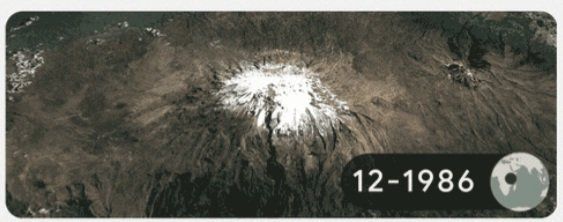Earth Day is on April 2022, and Google has decided to mark the occasion with a doodle. It highlights one of the most pressing issues – climate change.
The search engine has used a series of animations, depicting four locations, to show the impact of climate change on our planet.
The doodle uses real time-lapse imagery from Google’s Earth Timelapse and other resources, to show how climate change has impacted four locations on earth. The message is to ensure environmental conservation and protection. In an official blog post, Google said, “Acting now and together to live more sustainably is necessary to avoid the worst effects of climate change”.
Also Read | Humanity is doomed: Young people on climate change
The four images include the glacier retreat at Mt Kilimanjaro, in Tanzania, Africa, the glacier retreat in Sermersooq, Greenland, coral bleaching in the Great Barrier Reef, Lizard Island, Australia, and the Harz forests in Elend, Germany, destroyed by bark beetles due to rising temperatures and droughts.
The annual earth day is marked on the same date every year, to remind those on the planet to protect it and make it sustainable for the future. This year’s theme is “invest in our planet”.
Earth Day 2022 comes against troubling news about the drastic need to cut down on carbon dioxide emissions to fight climate change. As per reports, sucking the CO2 from the air is the only way forward, but the world doesn’t have the technology at present to carry out this process.
Also Read | NASA satellites show short-term drop in CO2 emissions during COVID lockdown
Many instances of glacier melting reflect the scary reality of global warming. While there have been reports that Greenland’s largest glaciers are likely to melt faster than feared, Himalayan glaciers have also been observed to be melting at an alarming rate.
Most recently, Antarctica’s ‘doomsday’ glacier, has been observed to be melting at an alarming rate, which scientists fear could trigger a chain reaction that would lead to global water levels rising by one and a half meters. With this glacier melting due to climate change, other Antarctic glaciers would also go at a faster rate.
Also Read | File of shame: United Nations slams world leaders for broken climate promises
Climate change, or the long-term shift in weather and temperature patterns, has largely been driven by human activities since the 1800s, as society became more dependent on fossil fuels like oil, coal, and gas.







